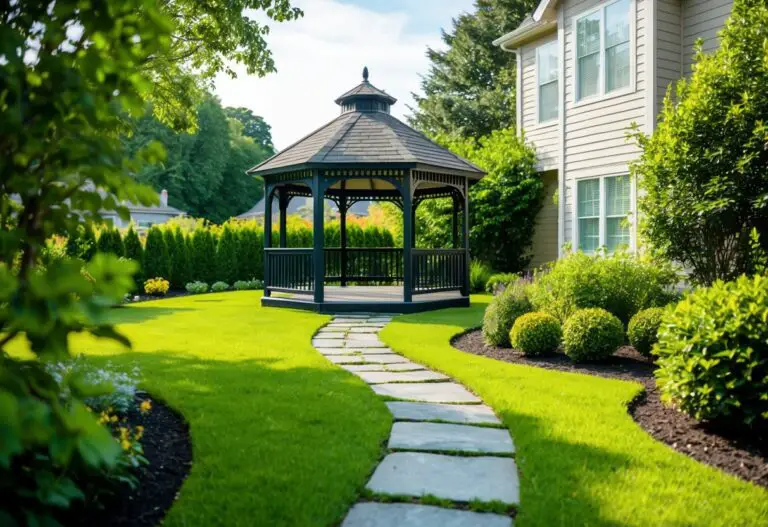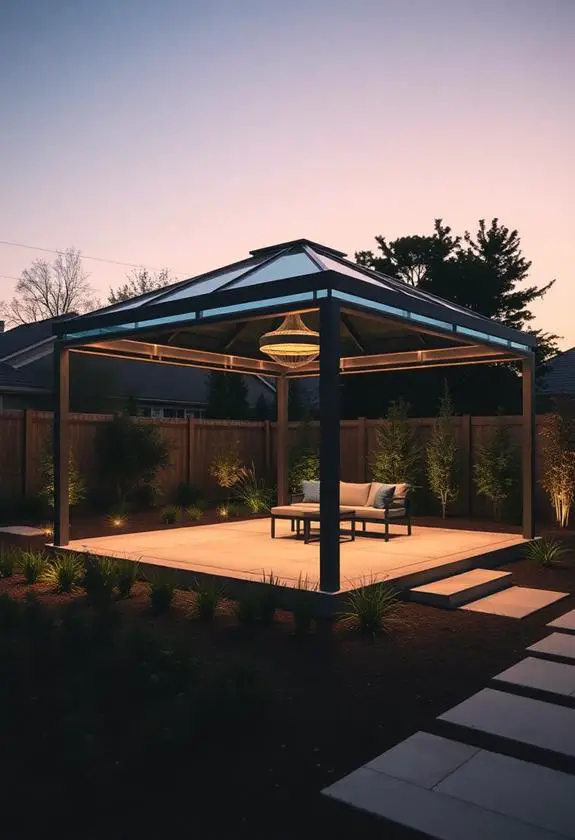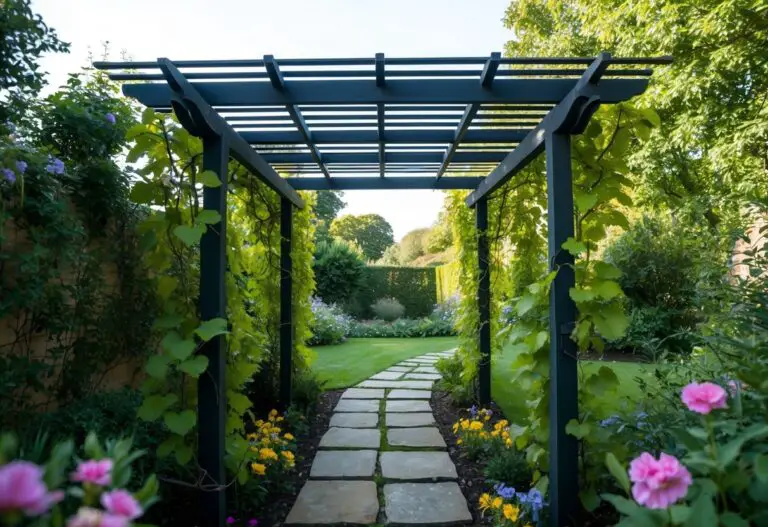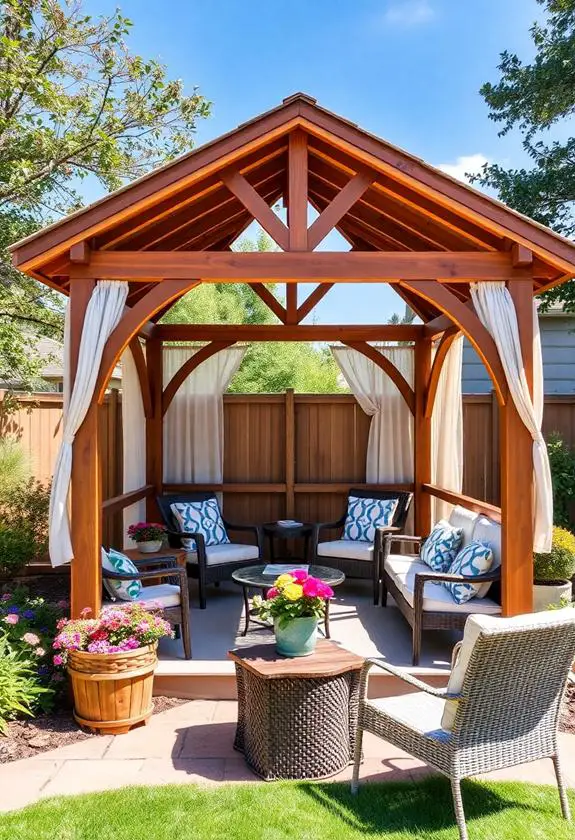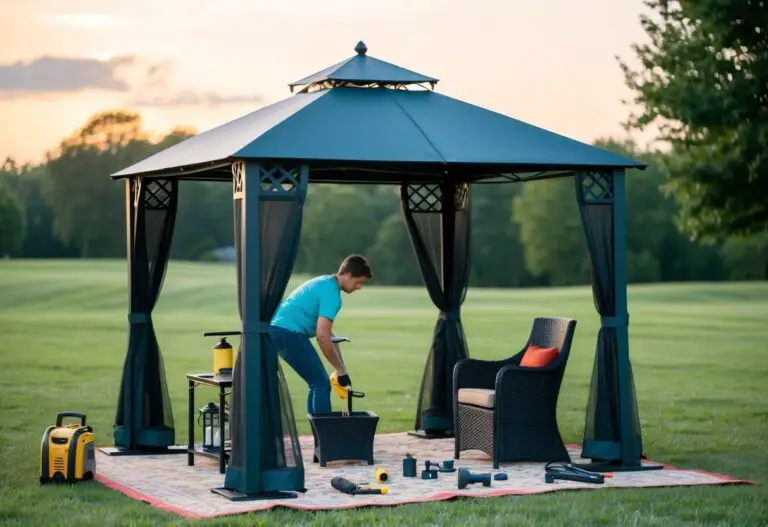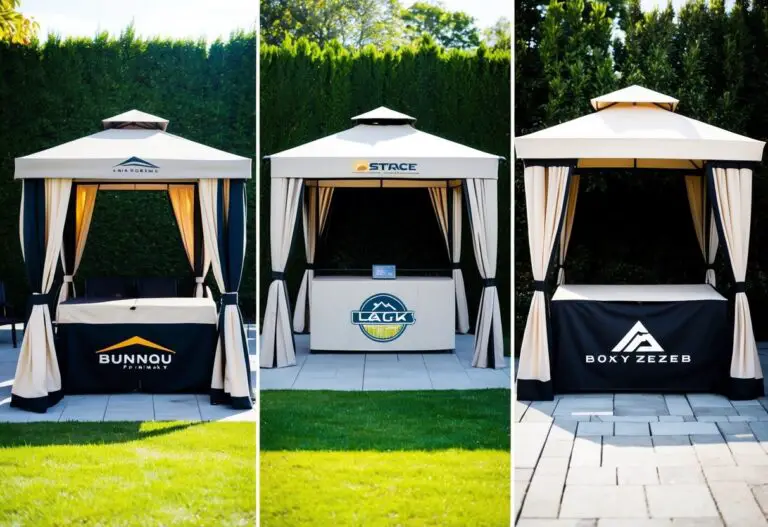Thinking about building a gazebo in your backyard? You’re in for a treat! A wood gazebo can add charm and value to your outdoor space. But before you grab your hammer, let’s talk about the most important part – the wood. The best wood for your gazebo depends on your budget, climate, and style preferences, with top choices including cedar, redwood, and pressure-treated pine.
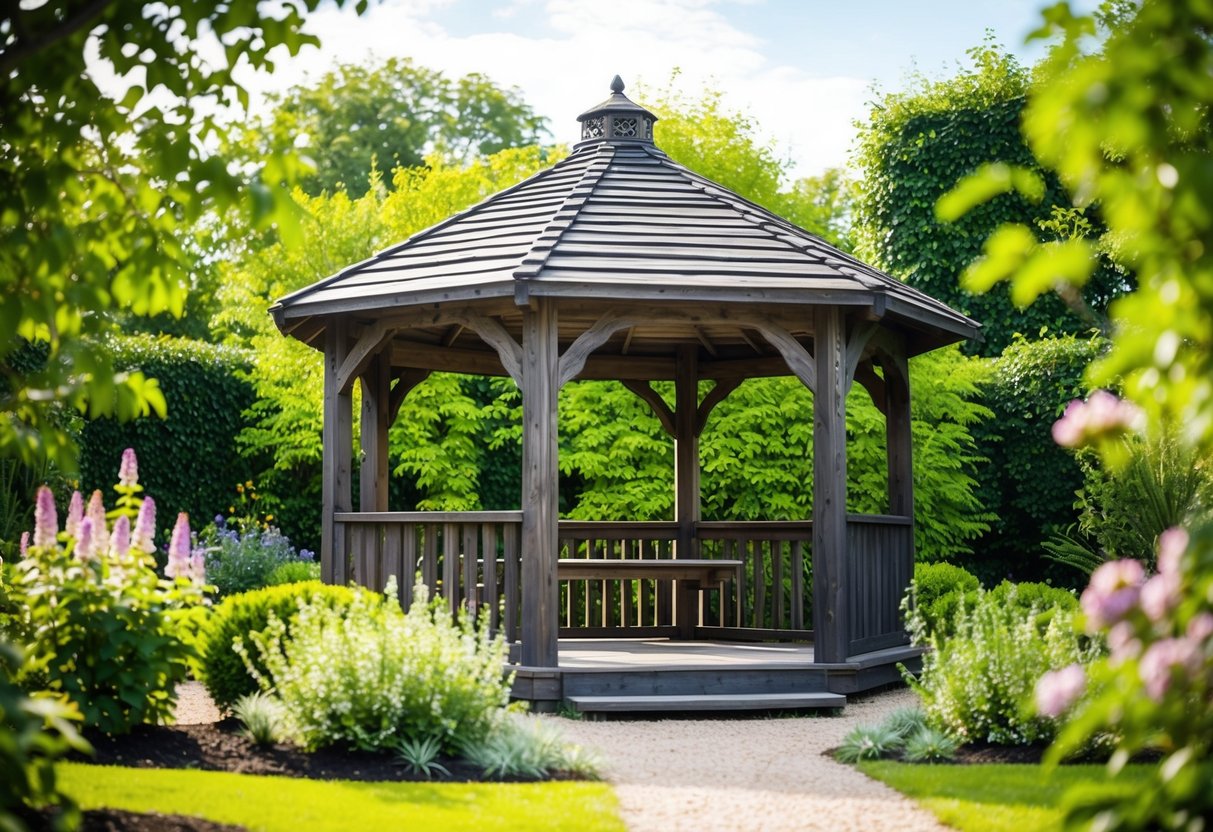
Cedar and redwood are popular for their natural beauty and resistance to decay. They smell great too! If you’re looking for a budget-friendly option, pressure-treated pine might be your best bet. It’s affordable and can stand up to the elements with proper care.
When picking your wood, think about how much time you want to spend on upkeep. Some woods need more TLC than others. Also, consider your local weather. Different woods handle rain, sun, and humidity in their own ways. With the right choice, you’ll have a stunning gazebo that lasts for years to come.
Key Takeaways
- Choose wood based on your budget, climate, and maintenance preferences
- Cedar and redwood offer natural beauty and durability for gazebos
- Regular maintenance helps extend the life of your wooden gazebo
Types Of Wood Suitable For Gazebos
You have many wood options for building a gazebo. Cedar is a popular choice. It resists rot and insects naturally. Cedar also looks nice and is easy to work with.
Redwood is similar to cedar. It’s strong and handles weather well. But it might cost more depending on where you live.
Teak is super tough and lasts a long time. It doesn’t rot easily. The downside? It’s expensive and can be hard to find.
If you’re on a budget, pressure-treated pine could work. It’s cheaper but needs more care over time.
For something really strong, look at ipe. This wood is very dense and lasts a long time. It’s pricey though, and can be tricky to use.
Here’s a quick comparison:
| Wood Type | Durability | Cost | Ease of Use |
|---|---|---|---|
| Cedar | High | $$ | Easy |
| Redwood | High | $$$ | Easy |
| Teak | Very High | $$$$ | Medium |
| Pine | Medium | $ | Easy |
| Ipe | Very High | $$$$ | Hard |
Think about what matters most to you: price, how long it lasts, or how it looks. This will help you pick the best wood for your gazebo.
Benefits Of Each Wood Type
Cedar is a top choice for gazebos. It has natural oils that keep bugs and rot away. Cedar ages nicely, turning a pretty silver color over time.
Redwood is another great option. It’s strong like cedar and lasts a long time. You’ll love its rich color and beautiful grain patterns.
Teak is super durable thanks to its high oil content. It fights off decay and gets a lovely patina as it ages. Teak looks amazing in any backyard.
Pressure-treated pine is easy on your wallet. You can find it at most lumber stores. Just remember to seal and stain it regularly to keep it looking good.
Ipe is incredibly tough. It’s so hard that you need special tools to work with it. But once installed, your gazebo will last for ages.
Each wood type has its perks. Think about what matters most to you – looks, durability, or cost. Pick the wood that fits your needs and budget best.
Factors To Consider When Choosing Wood
When building a gazebo, picking the right wood is key. You’ll want to think about a few things before making your choice.
Think about where you live. Is it hot and dry or rainy and humid? Some woods hold up better in certain climates. Cedar and redwood are great for wet areas, while pine can work well in drier spots.
How much time do you want to spend on upkeep? Some woods need more care than others. Cedar and redwood need less work, but pine might need more frequent sealing and staining.
Your budget matters too. Pine is often cheaper, while cedar and redwood cost more. Don’t forget to check what’s available near you, as shipping costs can add up.
Consider how you want your gazebo to look. Each wood type has its own color and grain pattern. Cedar has a reddish tone, while pine is lighter.
Durability is important for outdoor structures. Hardwoods like oak are tough but can be pricey. Softwoods like cedar resist rot and insects naturally.
Remember to think about the size of your project. Some woods come in longer lengths, which can be helpful for bigger gazebos.
Lastly, think about how the wood will work with other materials. If you’re using metal roofing or want to add decking, make sure your wood choice fits well with these elements.
Maintenance Tips For Gazebo Wood
Keeping your wooden gazebo in top shape is easy with a few simple steps. Regular care will help it last for years to come.
Clean your gazebo often. Use a soft brush to sweep away leaves and dirt. A gentle soap and water mix works well for tougher spots. Rinse it off and let it dry completely.
Look closely at the wood. Check for any cracks, loose boards, or wobbly parts. Fix small issues right away to avoid bigger problems later.
Protect the wood from weather damage. Apply a sealant or stain every few years. This keeps moisture out and prevents fading from the sun.
Before you seal or stain, make sure the wood is clean and dry. Follow the instructions on the product label carefully. Some gazebos may need special care, so check with the maker if you’re not sure.
Don’t forget about the little things. Tighten any loose screws or nails you find. Replace any boards that look rotten or damaged.
In winter, clear snow off the roof to prevent too much weight. Remove any wet leaves that could cause mold.
With these easy steps, your wooden gazebo will stay beautiful and strong for many seasons.
Frequently Asked Questions
Wood choice is crucial for gazebo construction. Let’s explore some common questions about selecting and using different wood types for outdoor structures.
How does cedar wood perform for constructing a pergola or gazebo?
Cedar is an excellent choice for outdoor structures. It resists decay and insects naturally. Cedar also holds up well in wet climates.
Its pinkish-red color looks great in gardens. Cedar is light but strong, making it easy to work with.
What size lumber is recommended for constructing the rafters of a pergola?
For pergola rafters, 2×6 or 2×8 lumber is often used. The exact size depends on the span and load the rafters need to support.
Larger lumber like 2×10 might be needed for longer spans. Always check local building codes for specific requirements.
Is it necessary to use pressure-treated lumber for building a patio cover?
Pressure-treated lumber is a good choice for patio covers. It resists rot and insects better than untreated wood.
You can use other durable woods like cedar or redwood too. These naturally resist decay without chemical treatment.
Which type of wood offers the longest durability for outdoor gazebos?
Teak is known for its exceptional durability outdoors. It can last for decades with minimal maintenance.
Cedar and redwood also offer great longevity. These woods naturally resist rot and insect damage.
Can regular wood be used for a gazebo roof, or is pressure-treated wood required?
You can use regular wood for a gazebo roof, but it’s not the best choice. Pressure-treated wood or naturally durable woods are better.
Cedar, redwood, or pressure-treated pine will last longer on your roof. They stand up better to rain and sun exposure.
